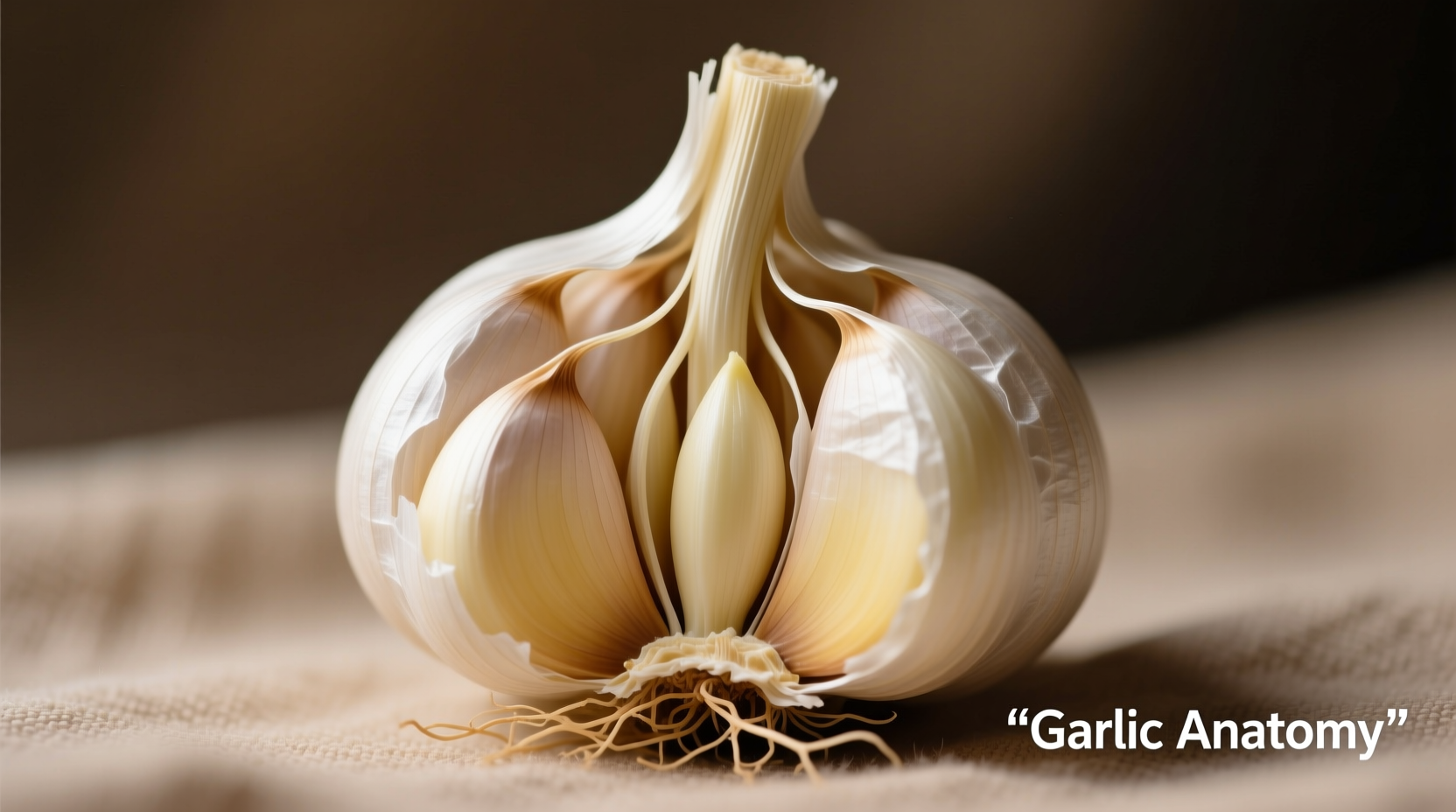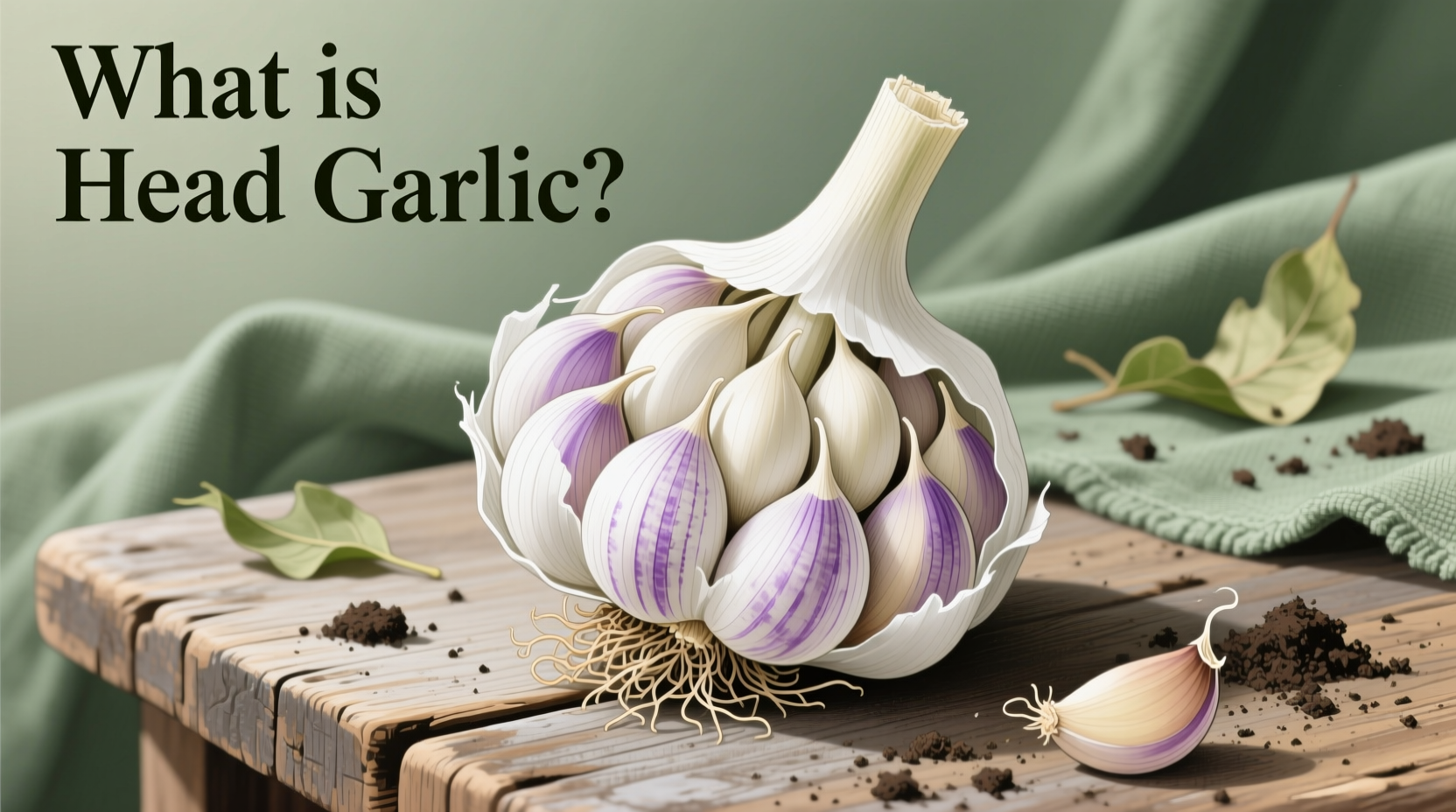Discover exactly what a head of garlic is, how to select the best ones, and why understanding this basic culinary component transforms your cooking. Whether you're a beginner chef or seasoned home cook, knowing how to work with whole garlic heads unlocks richer flavors and better results in every dish.
Understanding Garlic Anatomy: Beyond Just "Cloves"
When you hold a garlic head in your hand, you're holding nature's perfect flavor package. The head (or bulb) consists of multiple individual segments called cloves, all protected by layers of thin, parchment-like skin. At the base, you'll find the root plate where the garlic was attached to the plant. This complete structure preserves garlic's pungent oils and compounds far better than pre-minced or powdered alternatives.

Why Garlic Heads Matter in Your Kitchen
Using whole garlic heads rather than pre-processed forms gives you complete control over flavor intensity. When you prepare garlic yourself, you determine exactly how much allicin—the compound responsible for garlic's distinctive aroma and health benefits—is released through cutting, crushing, or mincing. Commercially prepared garlic often loses potency during processing and may contain preservatives.
| Garlic Form | Shelf Life | Flavor Intensity | Best Uses |
|---|---|---|---|
| Whole head (intact) | 2-3 months | Fresh, complex | All cooking methods |
| Individual cloves | 1-2 weeks | Strong, immediate | Sautéing, roasting |
| Minced (fresh) | 1-2 days | Very strong | Raw applications, dressings |
| Commercial minced | 6-12 months | Muted, sometimes bitter | Convenience cooking |
Selecting Quality Garlic Heads: What to Look For
Not all garlic heads deliver equal flavor. When shopping, choose heads that feel firm and heavy for their size with tight, unbroken skin. Avoid any with soft spots, green sprouts (unless you want milder flavor), or loose cloves. The California Department of Food and Agriculture notes that properly cured garlic heads should have dry, papery outer layers that protect the cloves within.
Garlic Through Time: A Brief Cultivation History
Garlic's journey from wild plant to kitchen staple spans millennia:
- 5,000+ years ago: First cultivated in Central Asia
- Ancient Egypt: Used as currency and fed to pyramid builders
- Roman Empire: Documented medicinal uses by Pliny the Elder
- 18th century: Introduced to North America by European settlers
- Today: China produces over 80% of the world's garlic supply
Proper Storage: Maximizing Freshness and Flavor
Store whole garlic heads in a cool, dark place with good air circulation—never in the refrigerator. The USDA recommends temperatures between 60-65°F (15-18°C) with 60-70% humidity. Mesh bags or open baskets work better than plastic containers which trap moisture. Properly stored, a garlic head maintains peak quality for 2-3 months. Once you separate cloves, use them within 1-2 weeks for best flavor.
Preparing Garlic Heads: Techniques That Make a Difference
How you prepare your garlic head dramatically affects flavor development:
- Roasting whole heads: Cut the top off, drizzle with oil, and bake at 400°F for 30-40 minutes for sweet, mellow flavor
- Separating cloves: Place the flat side of a knife on the head and give a firm tap to loosen cloves
- Peeling efficiently: Shake separated cloves in a sealed container to loosen skins
- Maximizing flavor: Let minced garlic rest 10 minutes before cooking to develop full flavor compounds
When Whole Heads Outperform Processed Alternatives
While convenience products have their place, whole garlic heads deliver superior results in specific situations:
- Slow-cooked dishes: Heads maintain integrity in stews and braises
- Roasted vegetable medleys: Whole heads caramelize beautifully alongside other vegetables
- Garlic-infused oils: Heads provide gradual flavor release without burning
- Special occasion cooking: Presentation of roasted heads impresses guests
According to research published in the Journal of Agricultural and Food Chemistry, fresh garlic heads contain significantly higher levels of beneficial organosulfur compounds compared to processed forms, which degrade during manufacturing.
Common Misconceptions About Garlic Heads
Several myths persist about garlic heads that affect how people use them:
- "Bigger heads mean stronger flavor": Size doesn't correlate with potency—growing conditions and variety matter more
- "Purple streaks indicate spoilage": These are natural anthocyanins that develop in some varieties
- "Green sprouts mean it's bad": Sprouted garlic is safe but has milder flavor; remove the green germ for stronger taste
- "All garlic heads are the same": Over 600 varieties exist with different flavor profiles and storage capabilities
Putting Knowledge Into Practice
Now that you understand what a head of garlic really is, you can make better choices at the market and in your kitchen. Select firm, heavy heads with tight skins, store them properly in a cool dark place, and prepare them according to your recipe's needs. Whether you're roasting whole heads for a mellow flavor or mincing fresh cloves for a pungent kick, knowing how to work with garlic in its natural form elevates every dish you create.











 浙公网安备
33010002000092号
浙公网安备
33010002000092号 浙B2-20120091-4
浙B2-20120091-4